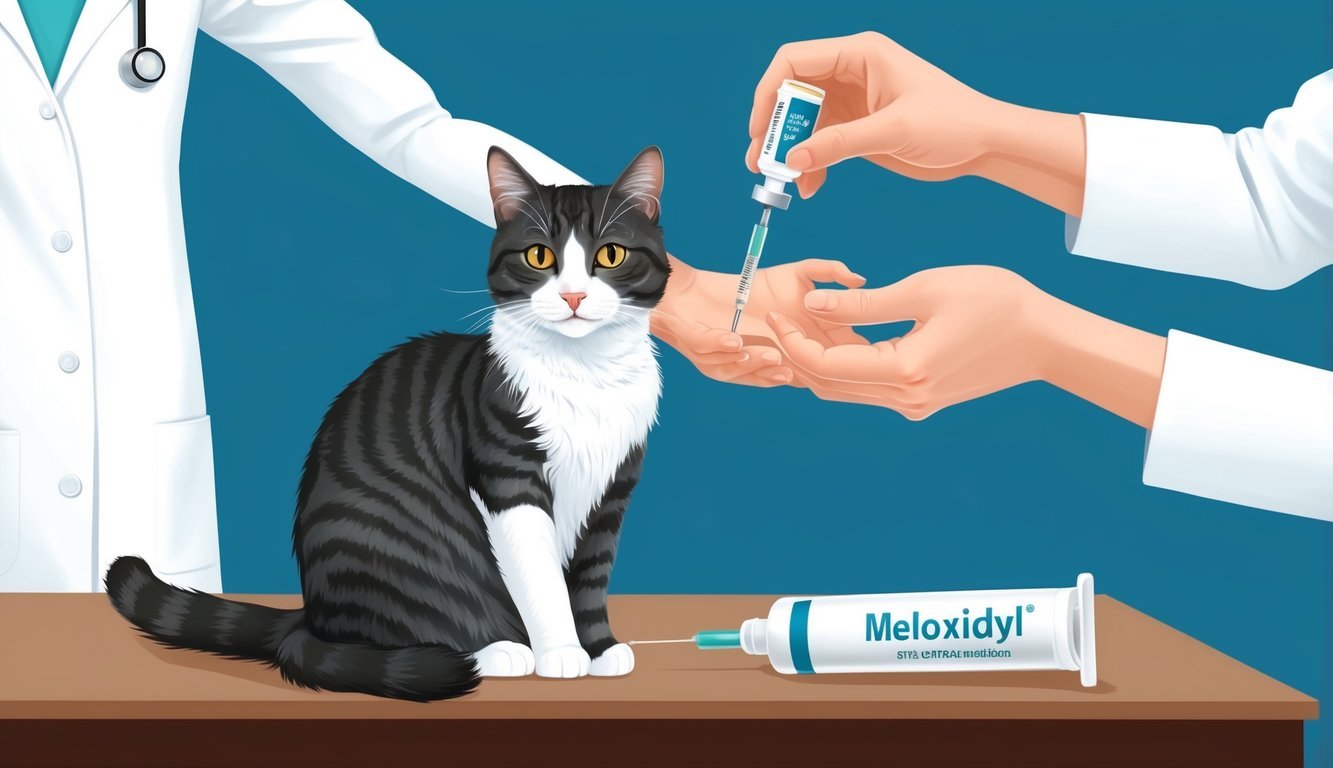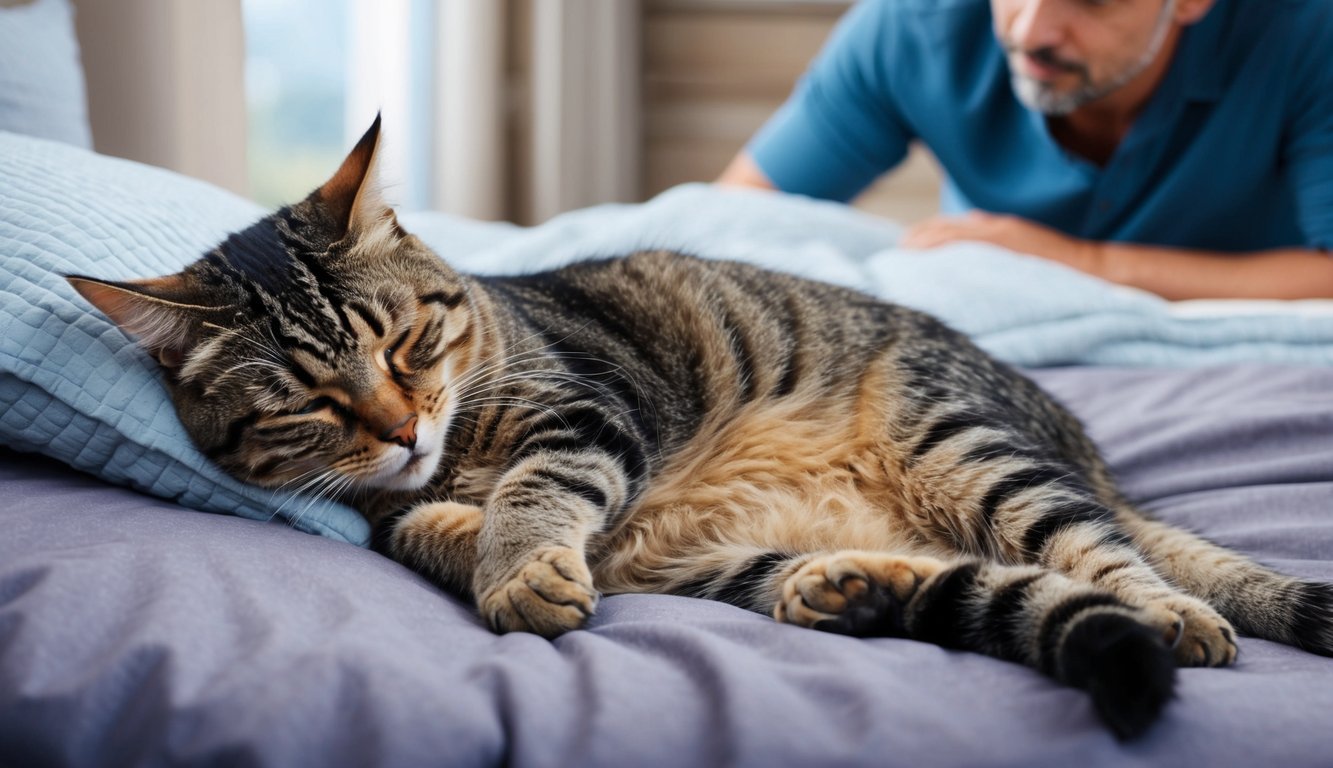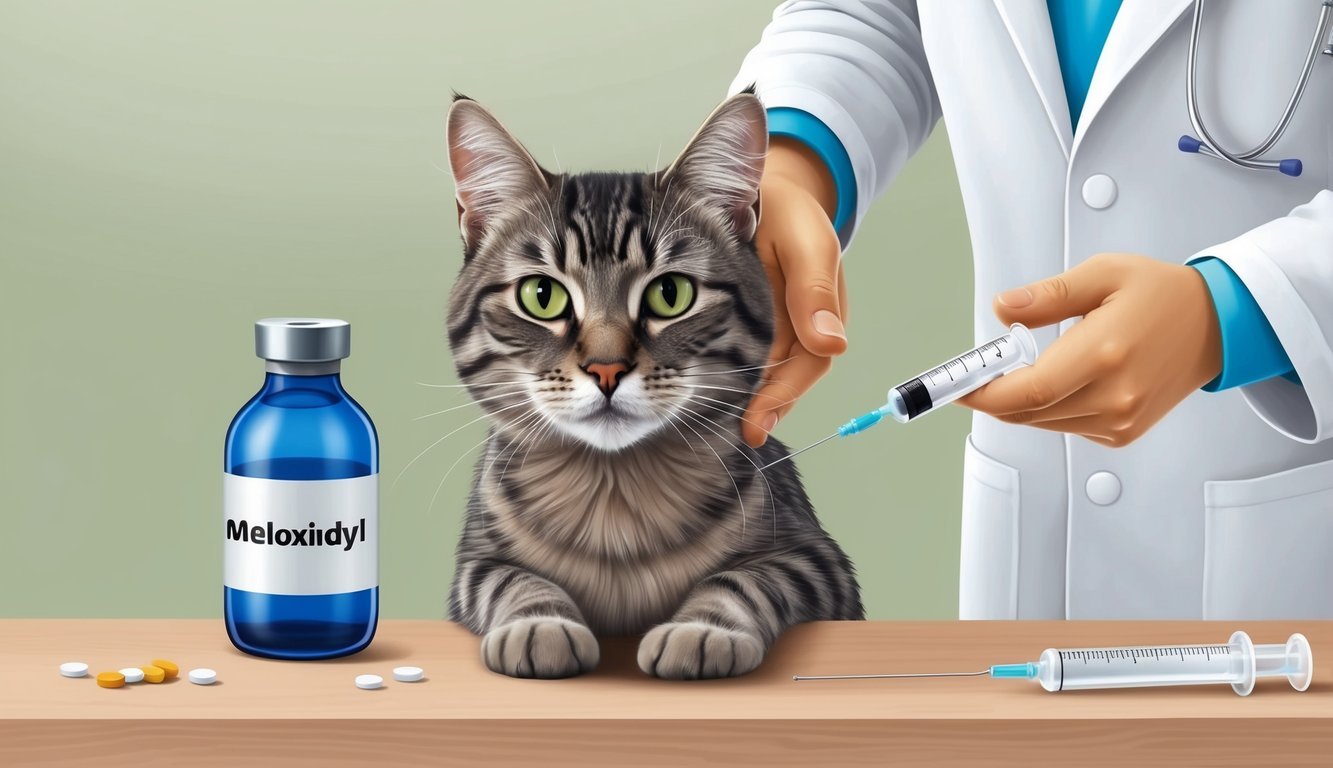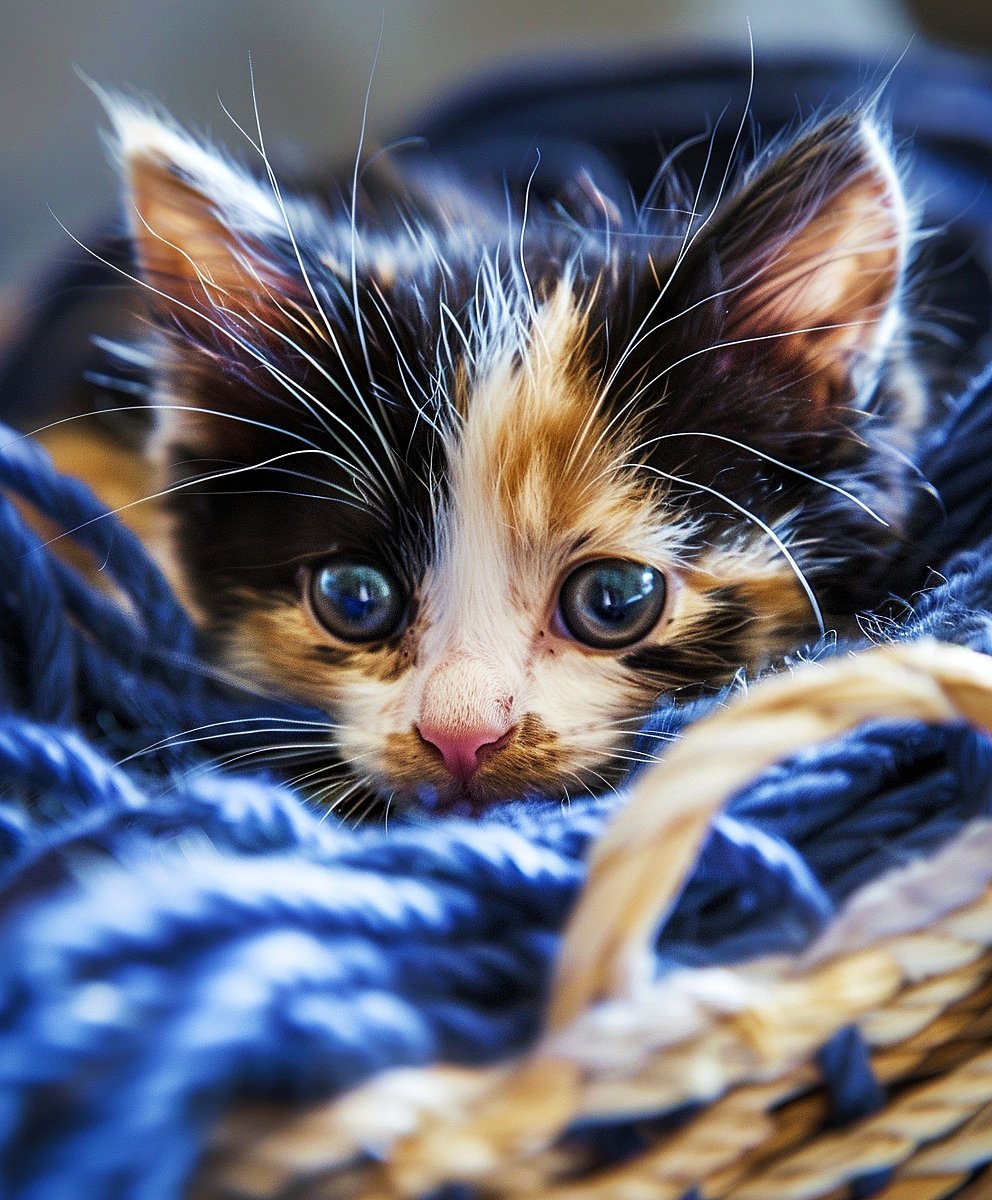When your cat is in pain, finding effective relief is essential for their well-being.
Meloxidyl, a prescription NSAID, is designed specifically for pets and can significantly reduce pain and inflammation caused by conditions like osteoarthritis or recovery from surgery. Understanding how Meloxidyl works and how to use it safely is crucial for ensuring your furry friend’s comfort and health.
Thinking about using Meloxidyl for your cat? It’s important to know the proper dosage and administration methods to maximize its benefits while minimizing potential side effects.
This article will guide you through everything you need to understand about Meloxidyl, so you can make informed decisions with your veterinarian about your cat’s pain management.
Your cat deserves to feel their best, and finding the right treatment can make a world of difference.
Dive into this comprehensive guide to learn how Meloxidyl can help your feline friend regain their comfort and joy in everyday activities.
Key Takeaways
- Meloxidyl is an effective NSAID for managing pain in cats.
- Proper dosage and administration are key to using Meloxidyl safely.
- Monitoring for side effects ensures your cat’s well-being during treatment.
Understanding Meloxidyl and Its Uses

Meloxidyl is a medication that plays a crucial role in managing pain and inflammation in cats.
It primarily contains meloxicam, a nonsteroidal anti-inflammatory drug (NSAID).
This section will provide insights into what Meloxidyl is, its specific uses in feline health, and a comparison with other NSAIDs.
What Is Meloxidyl?
Meloxidyl is a medication specifically designed for cats, mainly used to manage pain and inflammation.
As an NSAID, it works by inhibiting enzymes that lead to the production of inflammatory substances in the body.
This drug is particularly effective in treating conditions such as osteoarthritis and can help alleviate post-surgical pain.
Administered as an oral suspension, it is usually flavored to make it more palatable for cats, ensuring easier administration.
Uses in Cats
You might find your veterinarian recommending Meloxidyl for various conditions in your cat.
Common uses include:
- Osteoarthritis: It provides crucial pain relief for cats suffering from this degenerative joint disorder.
- Post-surgical Pain: After surgical procedures, Meloxidyl can help manage pain and aid recovery.
- Musculoskeletal Disorders: It’s also effective for pain stemming from injuries or other muscle and joint issues.
Your vet will determine the appropriate dosage based on your cat’s condition and weight.
It’s essential to follow their recommendations closely to ensure your cat’s well-being.
Meloxicam vs. Other NSAIDs
When comparing meloxicam (the active ingredient in Meloxidyl) to other NSAIDs, some differences stand out.
While various NSAIDs are available for pain relief, meloxicam is particularly favored for its targeted action and lower side-effect profile in cats.
Other common NSAIDs may include:
- Carprofen: Often used in dogs, but less commonly recommended for cats.
- Aspirin: Although effective, it has a narrower safety margin for felines.
Meloxicam is generally well-tolerated, but monitoring your cat for side effects like gastrointestinal issues or kidney problems is crucial, especially with long-term use.
Always consult your veterinarian before making any changes to your cat’s medication regimen.
Benefits of Meloxidyl for Cats
Meloxidyl offers various advantages for managing your cat’s health, especially when dealing with pain and inflammation.
Let’s explore how this medication specifically aids in these areas.
Pain Management
Managing pain in cats can be challenging, especially if your feline friend suffers from conditions like arthritis or joint pain.
Meloxidyl is designed as an effective pain relief option, targeting specific pain pathways.
It can help reduce the discomfort that comes with acute and chronic illnesses.
With Meloxidyl, you may notice a significant decrease in your cat’s visible signs of pain.
This can include reduced vocalization, less reluctance to jump or climb, and an overall improvement in mood.
Always consult your veterinarian for the correct dosage to ensure your cat receives the most effective pain management tailored to their needs.
Reducing Inflammation
Inflammation often accompanies many health issues in cats, impacting their overall comfort and well-being.
Meloxidyl has strong anti-inflammatory properties that can be particularly beneficial.
By administering this medication, you can help decrease swelling and inflammation associated with conditions such as arthritis and other musculoskeletal disorders.
The reduction in inflammation not only eases pain but also allows your cat to engage more fully in daily activities.
This contributes to a healthier, happier lifestyle for your pet.
Improving Mobility
Improving mobility is one of the key benefits of using Meloxidyl.
Cats may become less active due to pain or inflammation, affecting their quality of life.
With consistent use of Meloxidyl, you may observe an increase in your cat’s activity levels.
They may exhibit more interest in playing, jumping, and exploring their environment.
When your cat feels better, it can lead to stronger muscles and preserved joint health over time.
This enhanced mobility ensures they remain active and engaged, contributing positively to their overall quality of life.
Proper Dosage and Administration
Getting the right dosage and administration of Meloxidyl for your cat is crucial for safe and effective treatment.
Understanding how to measure and give the medication will help manage your cat’s pain properly.
Dosage Instructions
The correct dosage of Meloxidyl is based on your cat’s weight and specific health condition.
Typically, the initial dosage for most cats is around 0.05 mg/kg of body weight.
For example, if your cat weighs 4 kg, you would administer approximately 0.2 mg of Meloxidyl.
It’s essential to follow your veterinarian’s specific instructions because they will tailor the dosage to your cat’s needs.
You can measure the medication accurately using a syringe or dropper to ensure your cat receives the proper amount.
Oral Suspension
Meloxidyl usually comes in an oral suspension format, making it easier to administer.
The suspension is a liquid form of meloxicam, which can be given orally.
While the FDA has approved the use of meloxicam in various forms, it’s vital to remember that the oral suspension is generally not approved for cats under four months of age.
To administer the medication, aim for the back of your cat’s mouth to facilitate swallowing.
If your veterinarian has prescribed this medication, they may offer specific instructions about mixing or flavoring to improve acceptance.
Frequency and Duration of Treatment
Meloxidyl can typically be administered once daily.
After an initial injection of meloxicam, your cat may continue treatment with Meloxidyl 24 hours later.
The oral dose may be given for up to four days, depending on your cat’s condition.
Always monitor your cat for any adverse reactions during the treatment.
Keep an eye out for signs like vomiting or changes in stool, which may indicate complications.
Side Effects and Risks

When considering Meloxidyl for your cat, it’s essential to be aware of potential side effects and risks.
Monitoring your cat closely can help ensure that any adverse reactions are addressed promptly.
Common Side Effects
Meloxidyl may cause several side effects in cats.
Some of the most frequently reported issues include:
- Vomiting: This is one of the most common reactions. If your cat starts vomiting after taking Meloxidyl, you should consult your veterinarian.
- Diarrhea: Loose stools can occur, which may lead to dehydration if prolonged.
- Loss of Appetite: Your cat might show a decreased interest in food, potentially impacting their overall health.
Most of these side effects tend to be mild and often resolve on their own.
However, if they persist or worsen, contacting your veterinarian is crucial.
Keeping a watchful eye on your cat during treatment can help you catch these issues early.
Monitoring for Adverse Reactions
It’s vital to monitor your cat for any signs of adverse reactions while they are on Meloxidyl.
Look out for symptoms such as:
- Lethargy: Increased tiredness or unusual behaviors may indicate a negative response.
- Changes in Urination: Pay attention if your cat’s bathroom habits change significantly.
Regular veterinary check-ups can also aid in identifying potential issues.
Blood tests can help track kidney function and other vital indicators, providing peace of mind.
Your cat’s safety is paramount, so don’t hesitate to take them to the vet if anything seems off.
Risk of Kidney Issues
Kidney problems can be a serious concern with Meloxidyl usage.
Here’s what you should know:
- Acute Renal Failure: Though rare, there is a chance that Meloxidyl could lead to acute kidney failure in some cats.
- Chronic Kidney Disease: Pre-existing conditions can exacerbate this risk. It’s essential to discuss your cat’s health history with your vet before starting treatment.
Signs of kidney issues may include increased thirst, frequent urination, or decreased energy.
Always report any concerning symptoms to your veterinarian, as timely intervention can make a significant difference in treatment outcomes.
Special Considerations and Precautions

When using Meloxidyl for your cat, there are important factors to keep in mind.
Understanding safe practices, potential contraindications, and medication interactions can help ensure your pet’s well-being during treatment.
Safe Use in Cats with Chronic Conditions
If your cat suffers from chronic pain or conditions like arthritis, Meloxidyl can provide relief.
However, be cautious if your cat has a history of kidney issues.
This medication is metabolized by the kidneys, and existing problems could lead to complications.
Regular veterinary check-ups are essential.
They can monitor kidney function through blood tests and adjust the dosage accordingly.
You want to prevent any risk of kidney failure, which, while rare, is serious.
Always follow your vet’s guidance for safe use.
Contraindications and Cautions
Not every cat should use Meloxidyl.
If your feline friend has kidney disease, gastrointestinal disorders, or is under four months old, you should avoid this medication.
Use caution if your cat is also taking medications like Tramadol, as combining treatments can increase the risk of adverse reactions.
Watch for signs of discomfort after administration.
Symptoms such as vomiting, diarrhea, or unusual lethargy can indicate a negative response.
If such symptoms appear, discontinue use immediately and consult your veterinarian.
Interactions with Other Medications
Meloxidyl might interact with various medications, which can complicate treatment.
For instance, if your cat is taking steroids or other NSAIDs, the risk of gastrointestinal tract issues increases.
Always make it a point to inform your vet about any medications your cat is currently taking.
Keep track of your cat’s overall treatment plan, including off-label use of drugs, as incorrect combinations may lead to decreased effectiveness or heightened risks.
Careful monitoring and communication with your veterinarian can help ensure your cat remains healthy and receives the best care possible.
Recovery and Ongoing Treatment
When managing your cat’s recovery, it’s crucial to understand how to address both post-surgery care and chronic pain.
Proper treatment can ease your cat’s discomfort and improve their quality of life significantly.
Post-Surgery Recovery
After surgery, your cat may experience pain and inflammation.
Administering Meloxidyl as prescribed by your veterinarian can help manage this discomfort effectively.
Key points to monitor:
- Pain Signs: Look for changes in behavior, such as hiding or excessive grooming.
- Feeding: Ensure your cat eats and drinks normally. Loss of appetite can indicate complications.
- Activity Level: Limit rigorous activity for the first few days. Gentle movements are encouraged.
Routine follow-up appointments are essential to ensure your cat is healing properly.
Your vet may adjust the Meloxidyl dosage based on your cat’s progress.
Managing Chronic Pain
Cats with ongoing issues like arthritis or joint inflammation need continuous pain management.
Regular vet check-ups help address changes in their condition.
Strategies for managing chronic pain include:
- Medication: Your vet can use Meloxidyl long-term, but they will monitor kidney function and overall health.
- Weight Management: Keeping your cat at a healthy weight reduces strain on joints.
- Comfortable Environment: Provide soft bedding and easy access to food, water, and litter boxes.
Engaging your cat in low-impact play can also improve their mood and prevent stiffness.
Always consult your vet about the best activities for your cat’s condition.
Long-Term Use Considerations
Using Meloxidyl for extended periods requires careful attention.
While it effectively alleviates pain, there are potential side effects to watch for.
Important considerations include:
- Regular Monitoring: Routine blood tests may be necessary to check kidney health.
- Signs of Gastrointestinal Issues: Be alert for symptoms like bloody vomit or diarrhea, which could indicate complications.
- Successive Evaluations: Your veterinarian may adjust the treatment plan based on how well your cat responds and any emerging issues.
Keeping an open dialogue with your vet will help ensure your cat receives the best care possible throughout their recovery and treatment journey.
Alternatives to Meloxidyl
When exploring options other than Meloxidyl for managing your cat’s pain, it’s essential to consider various alternatives.
These may include other NSAIDs, non-pharmaceutical therapies, and even off-label medications.
Each option comes with its own benefits and potential risks.
Other NSAID Options
Several other Non-Steroidal Anti-Inflammatory Drugs (NSAIDs) may be suitable for your cat.
One notable alternative is Metacam (meloxicam), which has similar action mechanisms and is often used for pain relief in cats.
Rimadyl (carprofen) is another NSAID that some veterinarians may recommend, primarily for dogs but can sometimes be prescribed to cats.
It’s critical to consult your veterinarian before switching to another NSAID.
They can help determine the best fit based on your cat’s specific medical history and needs.
Non-Pharmaceutical Therapies
Beyond medications, non-pharmaceutical therapies can play a significant role in pain management.
Options like acupuncture can provide pain relief by stimulating certain points in the body, promoting natural healing.
Physical therapy is another valuable alternative.
It helps strengthen muscles around affected joints, enhancing mobility and reducing discomfort.
You can also explore laser therapy, which uses light to aid in healing and reduce pain.
These approaches are often safe and complementary to medications, making them worth considering.
Considering Off-Label Medications
In certain situations, veterinarians may suggest off-label medications like Tramadol.
While primarily used for humans, it can effectively manage pain in cats, especially when other options are not ideal.
Keep in mind that off-label use should always be guided by a veterinarian due to the specific dosing and monitoring required.
Your vet will weigh the potential benefits against any risks, ensuring your cat receives the most appropriate care for their condition.
Frequently Asked Questions
If you have questions about meloxidyl for your cat, you’re not alone.
Many cat owners want to know about its use, effectiveness, and safety.
Here are some of the most common inquiries.
What are the common side effects when administering meloxidyl to cats?
Common side effects include gastrointestinal issues like vomiting or diarrhea.
Some cats may also experience temporary changes in appetite or energy levels.
More serious effects might involve signs of kidney problems, so it’s essential to monitor your cat closely after starting the medication.
How should meloxidyl be dosed for a cat, and is there a dosage chart available?
Dosing for meloxidyl can vary based on your cat’s weight and specific needs.
Typically, a veterinarian will provide a dosage tailored to your cat’s condition.
While there are general guidelines available, always follow your vet’s recommendations, as they can provide a dosage chart specific to your situation.
Can you explain how to properly use meloxidyl in feline patients?
To administer meloxidyl, start by gathering all necessary supplies, including the medication and a clean syringe.
Ensure your cat is relaxed, and administer the correct dose directly into their mouth, ideally at the same time each day for consistency.
Use positive reinforcement, like treats, to make the experience smoother.
What are the indications for using meloxidyl in cats, and what does it treat?
Meloxidyl is typically used to manage pain and inflammation associated with conditions like arthritis or post-surgical recovery.
It’s effective for both acute and chronic pain situations, providing relief to help improve your cat’s quality of life.
Is meloxidyl considered a pain relief medication for cats, and how effective is it?
Yes, meloxidyl is classified as a nonsteroidal anti-inflammatory drug (NSAID) specifically for pain relief in cats.
Many veterinarians find it an effective option for managing pain and inflammation, making it a common choice in treatment plans.
After giving meloxidyl to a cat, how soon can I expect it to start working?
You may notice an improvement in your cat’s condition within a few hours of administration.
The exact response time can vary based on individual factors such as the severity of the condition being treated and your cat’s overall health.

